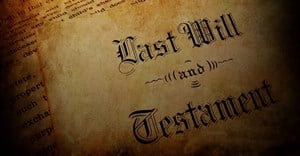Trending
Elections 2024
Jobs
- Conveyancing Secretary Cape Town
- Legal Advisor Johannesburg
- Orchards Partner Gauteng
- Call Centre Manager - Debt Collection Stellenbosch
Impact of Pension Funds Act on annuities and divorce

As a general rule, a fund may only make a deduction from a member's benefit if such a deduction is allowed in terms of the Pension Funds Act, the Income Tax Act and the Maintenance Act. This general rule is, however, subject to the exceptions set out in Section 37D. Section 37D(1)(d) states a registered fund may deduct from a member's benefit or minimum individual reserve (as the case may be) any amount assigned from such benefit or individual reserve to a non-member spouse in terms of a decree granted under Section 7 (8) (a) of the Divorce Act, 1979 (Act No. 70 of 1979).
Section 37A of the Pension Funds Act must therefore, in the context of divorce proceedings, be read together with the applicable sections of the Divorce Act. Section 7(7) of the Divorce Act provides that a 'pension interest' (as defined in Section 1) will be deemed to be a part of the assets at divorce.
Definition of pension interest
If one looks at the wording of Section 7(7) it is clear that the non-member spouse is only entitled to a portion of the member spouse's notional benefit if it qualifies as 'pension interest' as defined. It is therefore important that one understands what is meant by 'pension interest' when preparing a settlement agreement or drafting a divorce order.
'Pension interest' is defined as referring to the benefits to which such member would have been entitled in terms of the rules of the fund if his membership of the fund would have been terminated on the date of the divorce on account of his resignation from his office. Simply put: it refers to a notional benefit that would have been payable to the member spouse had his membership terminated at the date of divorce.
So what this means is that the member spouse must still hold a pension interest in the fund as at the date of divorce. If a resignation benefit had already become payable to him before the divorce, clearly he could not again be deemed to become entitled to a resignation benefit at the date of divorce. He would therefore no longer have a 'pension interest' for the purposes of Sections 7(7) and 7(8) of the Divorce Act read together with Section 37D(4)(a) of the Pension Funds Act.
Conditions of Act
Section 7(8), read together with Section 37D(4)(a) of the Pension Funds Act, sets out certain conditions with which a divorce order must comply in order for the fund concerned to be able to give effect to a non-member spouse's claim.
At retirement, a member of a retirement fund (excluding a provident fund) is entitled to withdraw up to a maximum of one-third of the underlying fund value as a lump sum. A minimum of two-thirds of this value must be used to buy a compulsory annuity. This compulsory annuity can be provided by the retirement fund or, alternatively, the retirement fund can transfer the obligation to provide an annuity to a registered insurer. In terms of the arrangement with the insurer, the insurer undertakes to provide an annuity income to the former member.
The annuity to be provided may, depending on the former member's election, either be a conventional annuity or a living annuity as defined in the Income Tax Act 58 of 1962. Even though the annuity that is paid to the individual is often referred to as a pension, a compulsory annuity is not a retirement fund and is not included in the definition of 'pension interest'.
Non-member has no claim
A member may get divorced after he or she has ceased to be a member of a fund. If the divorce order states that the non-member spouse is entitled to a share of the 'pension interest', that order will have no value for that spouse because the member will not have had, at the time of divorce, a 'pension interest' in the fund as defined. The spouse therefore wouldn't be able to claim against any pension interest and accordingly no pay-out can be made.
There is various case law and Pension Fund Adjudicator determinations on this issue:
In the matter of Eskom Pension and Provident Fund v Krugel [2011] 3 BPLR 309 (SCA) at 314G-H, the court confirmed that once the pension benefit has accrued to the member spouse before the date of divorce, the provisions of Sections 7(7) and 7(8) of the Divorce Act are no longer applicable.
In the recent matter of Saunders v Eskom Pension and Provident Fund [2013] JOL 30305 (PFA) the Adjudicator held that as the complainant's spouse had already resigned from his employment on the date of divorce, on a proper interpretation of Sections 7(7) and 7(8) of the Divorce Act, there was no pension interest which formed part of his assets which could be assigned to the complainant. The complaint was therefore dismissed.
Annuity cannot be ceded
What is also very important to bear in mind is that an annuity cannot be transferred or ceded to another person or institution, attached by a court to recover a debt or sold. However, all is not lost. The income from the annuity will form part of the total assets of the spouse. Where, at the time of divorce, a member spouse's compulsory annuity is the only or greater source of income, the non-member spouse can get access to this source of income by way of a maintenance order.
Settlement agreements often attempt to cater for the 'splitting' of the annuity and the payment of half of the annuity into the bank account of the non-member spouse. It should be noted that, in practice, insurers don't allow the income to be split between the member spouse and non-member spouse. They pay the annuity to the member spouse who will be taxed on it at his/her marginal rate. It is then the responsibility of the member spouse to pay maintenance over to the non-member spouse in accordance with the divorce order.
Entitled to a benefit
In light of the above it is vital that, when drafting divorce orders or settlement agreements, one first establishes whether or not the member spouse has become entitled to a benefit, or will become entitled to one on, or prior to, the date of divorce. If the member has already become entitled to a benefit prior to divorce, the non-member spouse will have no claim to the 'pension interest' as contemplated in the Divorce Act.
Common law principles and the division of matrimonial assets cover pension benefits that have already accrued to a member at the time of divorce, for example where a member has retired from a fund and has been paid a lump sum benefit.
















